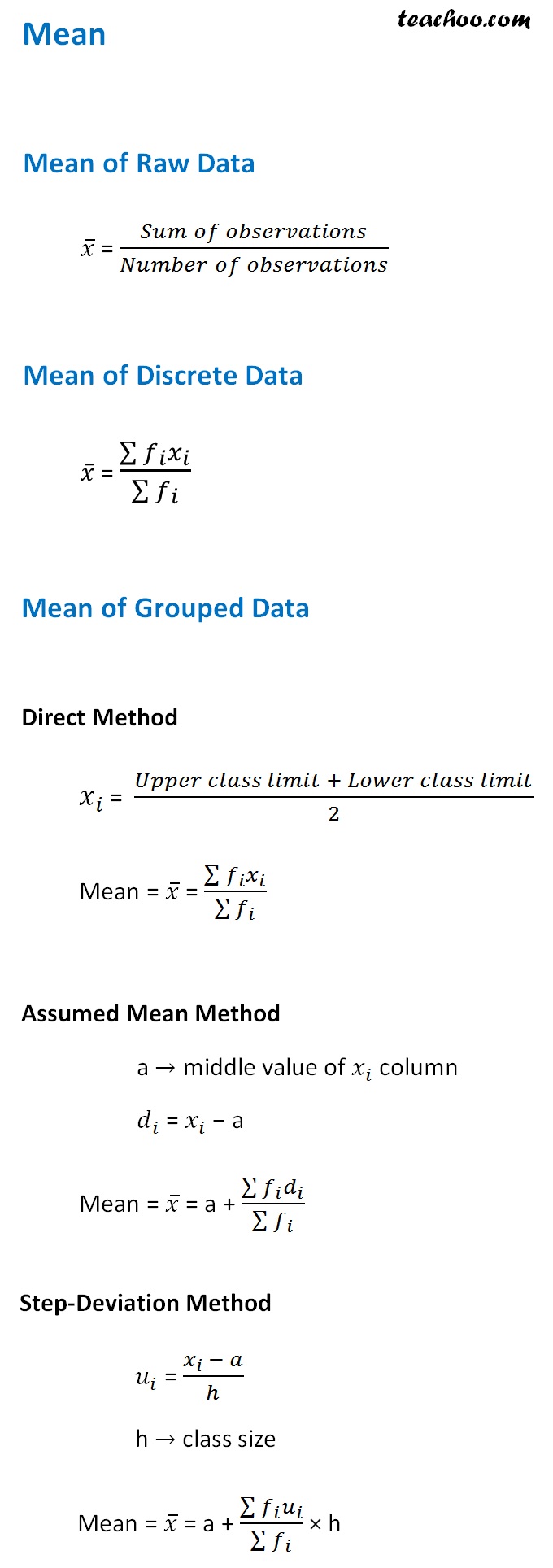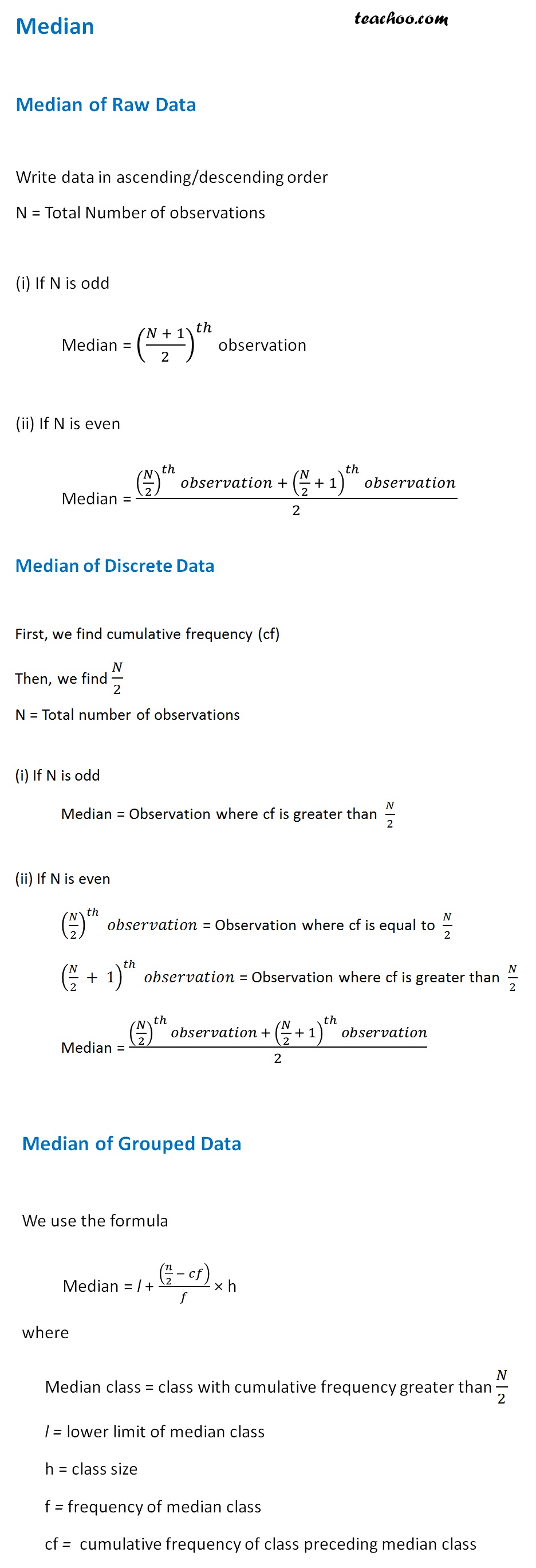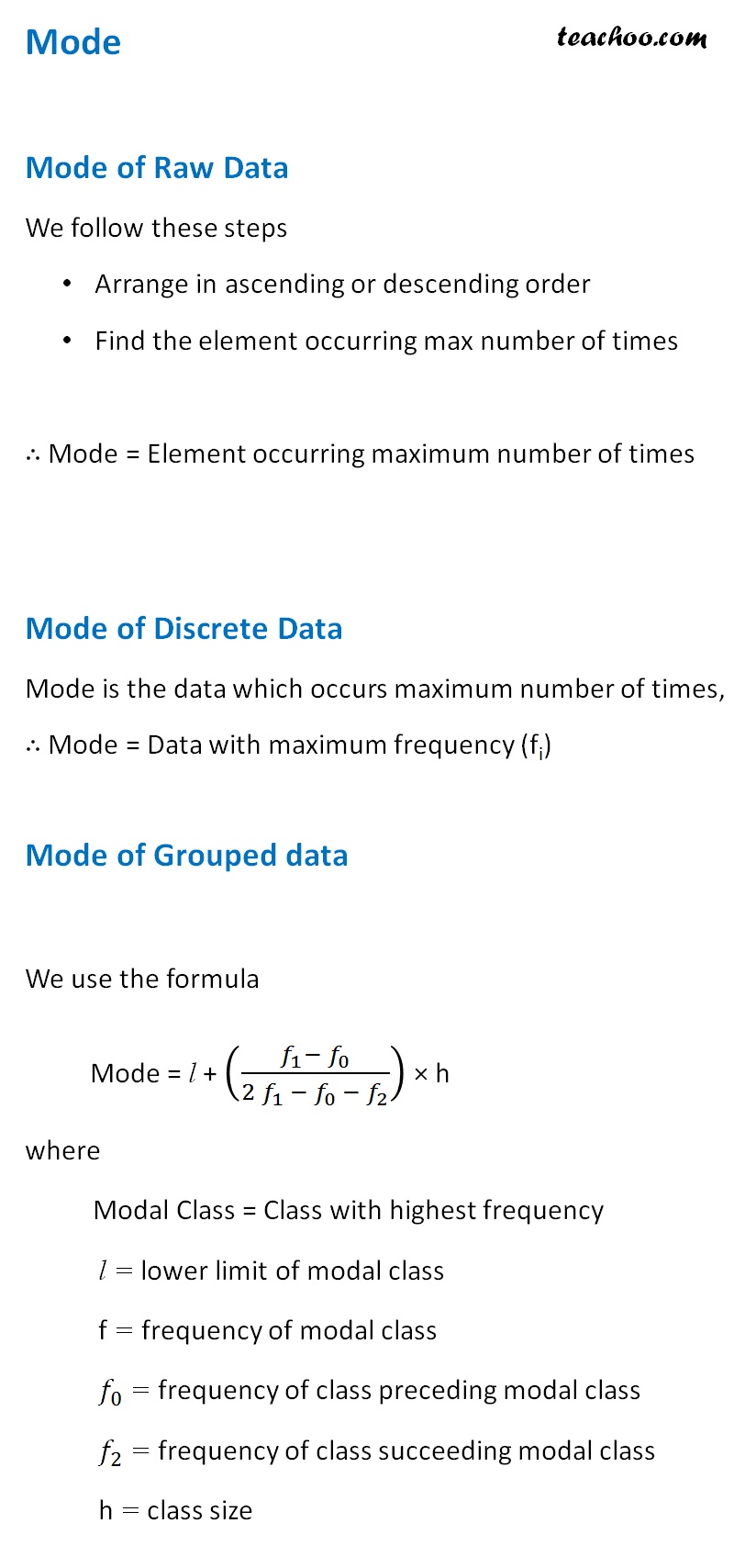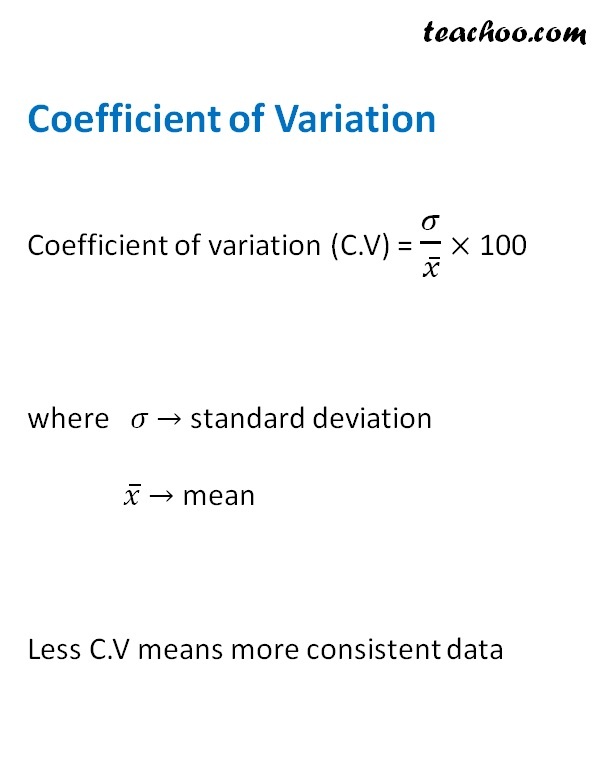Here, we list all Statistics Formulas for your use.
The formula list includes
- Range
-
Mean
- Mean of Raw Data
- Mean of Discrete Data
- Mean of Grouped Data
-
Median
- Median of Raw Data
- Median of Discrete Data
- Median of Grouped Data
-
Mode
- Mode of Raw Data
- Mode of Discrete Data
- Mode of Grouped Data
-
Mean deviation
of
- Raw Data
-
Discrete Data
- Grouped continuous data
-
Variance and Standard
Deviation
of
- Raw Data
-
Discrete Data
-
Grouped continuous data
Range
Range = Maximum value – Minimum Value
For data
5, 10, 15, 18, 21, 24, 24, 13, 2, 9, 9, 18, 18, 32, 28, 3, 14, 25, 3, 27
Maximum value = 32
Minimum value = 2
Thus,
Range = 32 – 2 = 30
Mean of Raw, Discrete and Grouped Data

Median of Raw, Discrete and Grouped Data

We can also find median using Ogive curve
We draw less than and more than ogive,
and their intersection is the median
Mode of Raw, Discrete and Grouped Data

Mean deviation about Mean and Median

Variance and Standard Deviation

Coefficient of Variation

